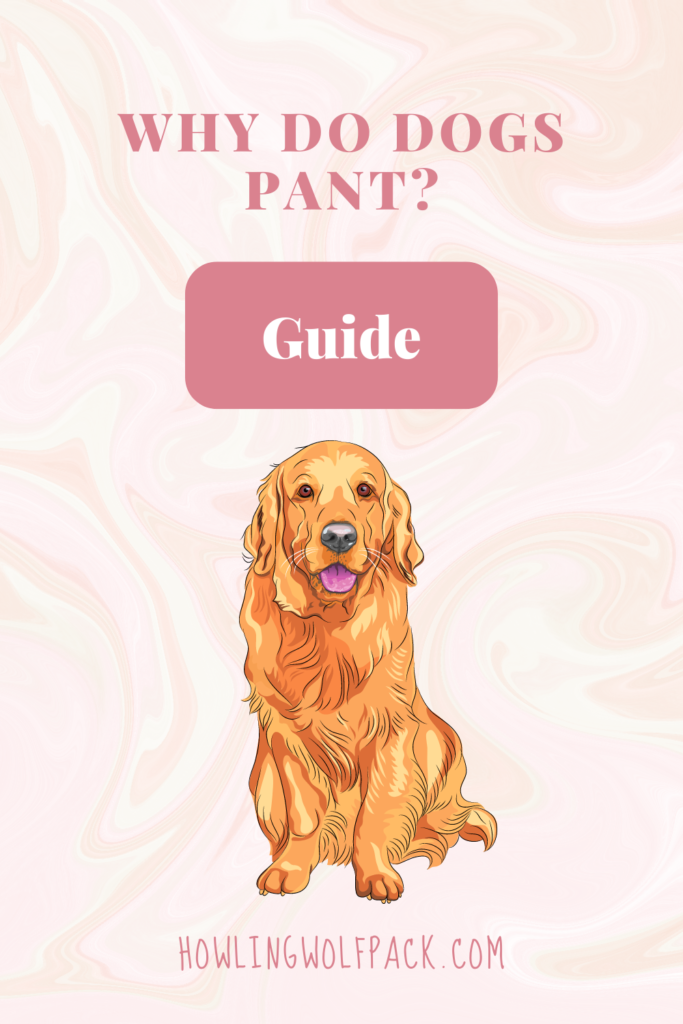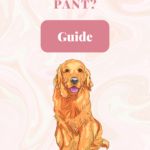Support for the blog comes from using the affiliate links below. At no additional cost to you, I may earn a commission on purchases. Thank you in advance.
If you’ve ever owned a dog, you’ve probably noticed that panting is a common behavior of dogs. But why do dogs pant? While it’s true that excessive panting can be a sign of an underlying health issue, in most cases, it’s perfectly normal behavior. Let’s take a closer look at why dogs pant and what you should be looking out for.
Why do dogs pant? The common reasons
Heat
Panting is a way for dogs to regulate their body temperature. Unlike humans, who sweat through their skin, dogs can sweat through their paw pads but as these are small surface areas, this is not a very efficient process to remove heat. Instead, dogs pant to release the hot air from their lungs and replace it with cooler air. Heavy panting is often combined with a protruding tongue which allows the hot moisture on the tongue to evaporate, which cools the dog down. In addition to this, some dogs drool when they are panting as another way to remove heat from their body.
Anxious or Stressed
Dogs can also pant when they are feeling anxious or stressed. Dogs that are anxious may also pace back and forth, be licking lips, or have wide, alert eyes. If your dog’s body language is showing they are stressed in addition to panting heavily, it’s best to remove them from the setting as something is likely causing them stress. You may see this panting when your dog is around loud fireworks, is experiencing separation anxiety, or is in the presence of other dominating dogs.
Pain or discomfort
Another reason why dogs pant is because they are in pain or discomfort. Dogs are very good at hiding pain so if your dog is panting when they are not trying to cool down or after exercise, this could be an indication that they are in pain. Another sign of this is if they have begun licking or biting a body part more than usual or if they are reluctant to lie down at night. If you suspect that your dog is in any type of pain then take them to the vet immediately.
Happiness
Many dogs also pant when they are happy. This panting is paired with relaxed facial features and a doggie smile. You can usually notice this mild panting after your dog has played with their toy or had a kiss and a cuddle from you.
Cause for concern
Heatstroke
During hot weather, if your dog’s internal temperature is rising above its normal temperature of 102 F then panting will no longer be an effective way to cool them down and they will need your help. This excessive heat will quickly lead to heatstroke which is very dangerous and sometimes fatal. Symptoms of heatstroke include excessively panting, excessive thirst, hot to the touch and bright red tongue or gums.
The best way to help your dog avoid heatstroke and stay comfortable is to provide them with plenty of cold water and shade on hot days. If you’re going to be spending time outdoors with your pup, bring along a portable water bowl and take frequent breaks in the shade. You might also want to consider investing in a cooling vest or mat for your dog if they tend to overheat easily. These products can help keep dogs cool even on the hottest days.
Brachycephalic Obstructive Airway Syndrome (BOAS)
Brachycephalic breeds such as pugs, french bulldogs and boxers have flat faces and squashed noses and tend to pant more because of this. These breeds of dog usually have breathing difficulty as a result of a narrowed upper respiratory tract. The respiratory disease Brachycephalic Obstructive Airway Syndrome (BOAS) is common in brachycephalic breeds so if you have one and notice your dog is exhibiting abnormal panting then it might be worth a trip to the vet.
Allergic Reaction
Another reason for panting could be an allergic reaction to medication or something they have eaten. If your dog has also become lethargic and is vomiting then they may be having an allergic reaction and your pup should be bought to the vet straight away.
Labored breathing
Panting shouldn’t be confused with labored breathing, also known as dyspnea. This is when your dog is having breathing difficulty and symptoms can include a persistent cough, an unusually hoarse sounding bark and stretching the neck out to breathe. Take your pup to the vet immediately if you believe your dog is having difficulty breathing.
Cushing’s Disease
Cushing’s disease is a common condition with about 100,000 dogs being diagnosed per year with this disease in the United States1. It occurs when the dog’s adrenal glands produce too much cortisol. Cortisol is a stress hormone that helps the body to deal with physical and emotional stress. Symptoms of Cushing’s disease include excessive panting, a pot belly, hair loss and excessive eating and drinking.
Conclusion
If your dog is panting excessively, it’s important to pay close attention to their body language and the environment around them. The panting could be due to stress, happiness, heat or pain. On it’s own, panting can’t tell you which one your dog is feeling but when considered with your dogs other behaviors you can identify if the panting is a cause for concern. In most cases, it’s nothing to worry about. However, if the panting persists and is in combination with vomiting, lethargy or changes in mood and behaviors then it’s always best to consult with your veterinarian as there could be a underlying health issue present such as Cushing’s Disease or Brachycephalic Obstructive Airway Syndrome (BOAS).

References
1https://hospital.vetmed.wsu.edu/2020/04/20/what-is-cushings-disease/



